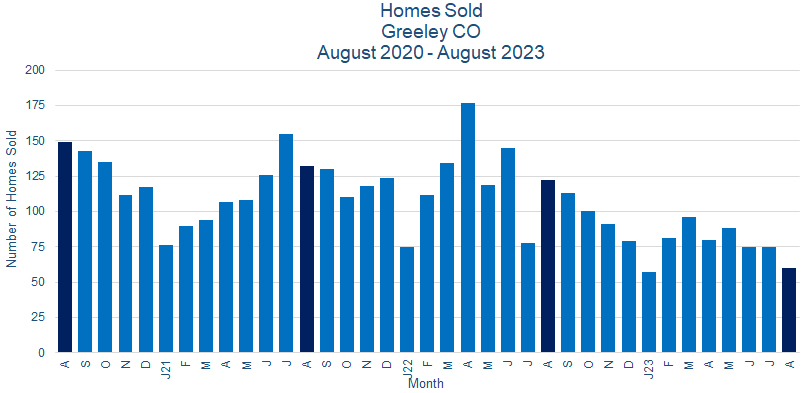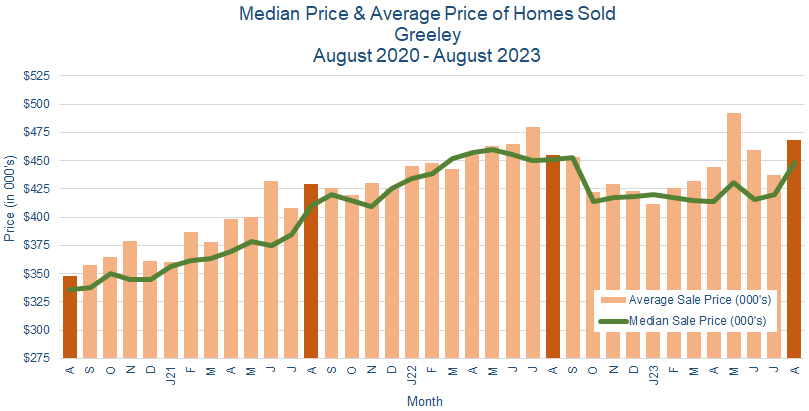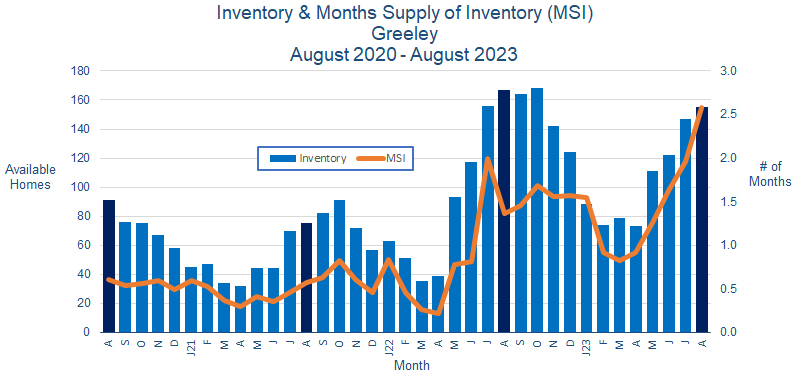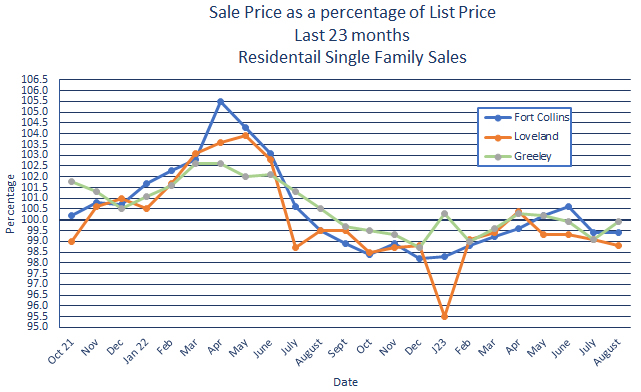This is the September 2023 Real Estate Market Report for Greeley CO
Sales:

Greeley CO home sales in declined in August 2023. There were 60 homes sold, down 20% from 75 sales in July, 2023, and down 50.9% from the 122 homes sold in August 2022. 2023 year-to-date sales of 612 homes were down 36.4% from 2022's 962 sales for the same period.
Prices:

Home prices continued to rise in August 2023. The median price gained 6.7% to $448K from $420K in July 2023, while the average price gained 7.1% to $468K from the previous month's $437K. Please keep in mind that this number reports the specific sales during the last month and is subject to random market variations as well as specific market driven causes - it therefore needs to be considered in a broader time period context.
Inventory:

The inventory of homes for sale in Greeley CO once again rose in August 2023. 155 homes were available for sale at the end of the month, up 5.4% from the 147 homes on the market at the end of June 2023. The month's supply of inventory (MSI) rose to 2.6 months from the previous month's 2.0, as inventory rose and sales declined.
Sales Price vs. List Price:

In August 2023, homes sold for an average of 99.9% of listing price, up from the previous month's 99.1%.
Summary:
So, how's the Greeley CO housing market doing? It's complicated.
Inventory and prices rose while sales fell in August 2023. Hmmm. Falling sales and rising home prices and inventory could be signaling that sales activity may have peaked for the year. But they could also suggest a market correction. And we're entering what has in the past been a slower market period.
It's never a great idea to base predictions on a single data point - in this case, one month of data that may or may not signal some changes in market conditions. This is certainly true in markets subject to external forces that are themselves a bit chaotic and potentially of great significance. And it's particularly true in markets like ours where recent historical data has been impacted so strongly by those externalities.
So, while sales were down over last month, that isn't the indicator we're looking most closely at - its importance is somewhat discounted by the fact that a substantial portion of those sales, 66.6%, were in upper price ranges.
Overall, prices and interest rates are still rising, and incomes are still mostly stagnant. Additionally, a growing affordability gap remains a problem for a significant percentage of our residents. The effect of all of that, combined with impacts from externalities, is that the pools of both potential home buyers and home sellers are showing more caution and hesitancy, resulting in a contracting market. The market itself could be considered relatively stable, even if it's somewhat smaller than before, and structurally flawed.
But forecasting our housing market isn't going to depend on what happens here. With the housing market subject to changing market forces - rather than when it was a major driver of them - as well as those externalities mentioned above, we certainly have less clarity about where we're headed. And it's our belief that greater certainty about those externalities will be required before we can make any reliable predictions. We'll still be here telling you what has happened, and why - but we're all going to have to wait to see how it's all going to play out.
